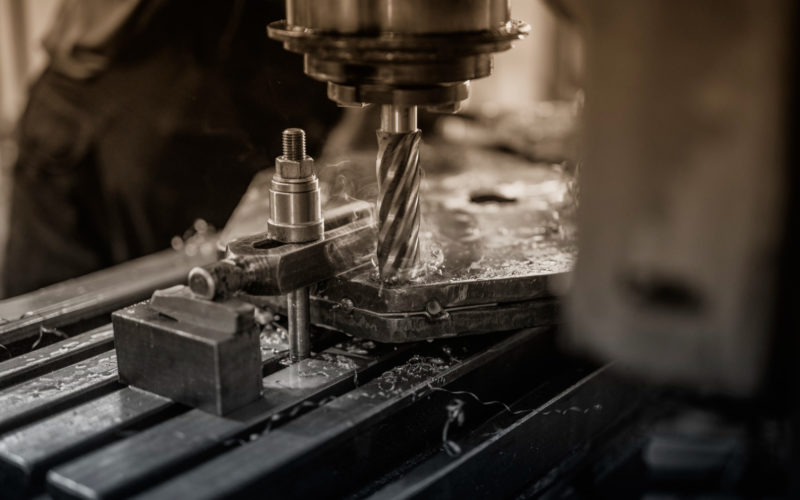The durability and performance of everyday tools, from kitchen knives to industrial machinery, are the results of meticulous material selection and engineering. Numerous advancements in materials science have led to the development of high-performance tools that withstand rigorous use. For instance, the introduction of diamond-like carbon coatings has significantly enhanced the wear resistance of cutting tools, extending their lifespan and efficiency.
In the aerospace industry, the adoption of oxide dispersion-strengthened alloys has improved the durability of components operating under extreme conditions. These materials incorporate fine oxide particles into the metal matrix, enhancing high-temperature strength and resistance to environmental degradation.
Such innovations underscore the critical role of materials science in developing tools and components that meet the demanding requirements of modern applications.
Choosing the Right Material — What Makes Tools Tough and Reliable?
Selecting the appropriate material is crucial for crafting tools that are both tough and reliable. Materials like high-speed steel and carbide are commonly used due to their distinct properties. HSS, known for its toughness and wear resistance, is widely utilized in cutting tools and can withstand high temperatures. Carbide, exceptionally hard and durable, is ideal for high-speed operations and maintains sharpness longer than HSS.
In the aerospace industry, materials must endure extreme conditions. Advanced alloys, such as titanium aluminides, offer high strength-to-weight ratios and excellent resistance to high temperatures, making them suitable for jet engine components.
These materials can withstand temperatures up to 800°C, significantly higher than traditional titanium alloys. The choice of material directly impacts the performance, durability, and safety of tools and components across various industries.
Secret Ingredients — How Heat and Coatings Give Tools Superpowers
Heat treatments and surface coatings are extremely important in enhancing the performance and longevity of tools. Processes like quenching and tempering modify the microstructure of steel, increasing hardness and wear resistance.
For instance, quenching involves rapid cooling to form martensite, a hard and brittle phase, which is then tempered to achieve a balance between hardness and toughness. This combination is essential for tools that must endure high stress and wear.
Surface coatings further augment tool capabilities by providing a protective barrier against wear and corrosion. Coatings such as titanium nitride and titanium carbonitride are commonly applied to cutting tools. TiN coatings, with a hardness of approximately 2,300 to 2,500 Vickers, significantly increase surface hardness, extending tool life by up to three times.
TiCN coatings offer even higher hardness, ranging from HV3000 to HV4000, enhancing wear resistance and reducing friction during cutting operations. These advancements in heat treatment and coating technologies are crucial for developing tools that meet the rigorous demands of modern manufacturing.
Steel Microstructures — The Building Blocks of Power Tools
The microstructure of steel (the arrangement of its internal phases) significantly influences the performance of power tools. By manipulating factors such as carbon content and cooling rates during heat treatment, manufacturers can tailor steel’s properties to meet specific requirements.
For instance, rapid cooling (quenching) transforms austenite into martensite, a hard and brittle phase, which is then tempered to achieve a balance between hardness and toughness. This process is essential for tools that must endure high stress and wear.
In power tools, steels with refined microstructures offer enhanced durability and performance. High-speed steels, commonly used in drill bits and saw blades, contain carbides that provide wear resistance and maintain cutting edges at elevated temperatures.
The presence of carbides, such as tungsten carbide, contributes to the hardness and heat resistance of these tools, enabling them to operate efficiently under demanding conditions. Understanding and controlling steel microstructures are crucial for developing power tools that combine strength, durability, and reliability.
Built to Perform — How Testing Ensures Tools Go the Distance
Ensuring the reliability and safety of tools involves rigorous testing protocols that assess their performance under various conditions. For instance, OSHA mandates that live-line tools, used in electrical work, undergo daily inspections and biennial electrical testing to verify their insulating properties. These tests include applying specific voltage levels to confirm the tool’s integrity along its entire working length.
In the manufacturing sector, power tools are subjected to standards (such as UL 60745-1), which outlines general safety requirements. Compliance with these standards involves evaluating aspects like mechanical strength, electrical insulation, and resistance to environmental factors.
Manufacturers often collaborate with testing laboratories to certify that their products meet these stringent criteria, ensuring that tools not only perform effectively but also maintain safety throughout their operational lifespan.
What’s Next? New Materials Shaping the Future of Tools
Advancements in materials science are poised to revolutionize the tooling industry, introducing materials that offer superior performance and sustainability. For instance, the development of nanostructured materials has led to tools with enhanced hardness and wear resistance. These materials exhibit grain sizes on the nanometer scale, resulting in improved mechanical properties compared to their conventional counterparts.
The integration of additive manufacturing, or 3D printing, is enabling the creation of complex tool geometries using advanced materials. This technology allows for the production of tools with optimized designs that were previously unattainable through traditional manufacturing methods.
The combination of innovative materials and manufacturing techniques is set to drive the next generation of high-performance tools, meeting the evolving demands of various industries.
Why Material Science Matters in Your Daily Life
Material science profoundly influences our daily lives, often in ways we may not immediately recognize. The development of advanced materials has led to the creation of more efficient and durable products, from smartphones with scratch-resistant screens to lightweight, fuel-efficient vehicles.
For instance, the integration of carbon fiber composites in automotive manufacturing has resulted in vehicles that are much lighter than those made with traditional steel, enhancing fuel efficiency and reducing emissions.
Material science also plays a crucial role in medical advancements. The development of biocompatible materials has enabled the creation of implants and prosthetics that improve the quality of life for millions. Titanium alloys are commonly used in joint replacements due to their strength and compatibility with human tissue, leading to a high success rate in orthopedic surgeries.












